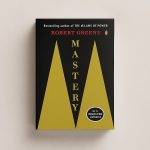Spanish literature spans centuries of creativity, blending rich history, regional diversity, and timeless storytelling. This curated list of the Top 10 Spanish Books to Read Before You Die showcases classics and modern masterpieces by the nation’s greatest authors. From Cervantes’s groundbreaking Don Quixote to contemporary gems like The Shadow of the Wind, these works explore love, identity, injustice, and the resilience of the human spirit. Each novel offers unique insight into Spain’s cultural and historical soul, whether through sweeping epics, intimate portraits, or daring literary experiments. These books are essential not only for readers of Spanish literature, but for anyone who values unforgettable storytelling.
Top 10 Spanish Books to Read Before You Die
1. Don Quixote — Miguel de Cervantes Saavedra

Often considered the first modern novel, Don Quixote (1605, 1615) follows Alonso Quixano, a middle-aged man who, inspired by romantic tales of knight-errantry, renames himself Don Quixote and sets out to revive chivalry. Accompanied by his pragmatic squire, Sancho Panza, Quixote embarks on absurd yet noble adventures, famously battling windmills he mistakes for giants. Cervantes blends slapstick humor with philosophical depth, delivering pointed satire on outdated ideals while honoring the enduring human need for dreams. The interplay between imagination and reality—between Quixote’s world and the “truth” others see—makes this novel as relevant today as it was four centuries ago. Its insight into friendship, identity, and resilience ensures its place at the pinnacle of world literature.
2. La Colmena (The Hive) — Camilo José Cela

Published in 1951, La Colmena is a fragmented social portrait of Madrid under Franco’s repressive regime. Through over 300 short scenes, Cela interweaves the lives of 160 characters—café patrons, struggling workers, widows, and hustlers—capturing a city buzzing with survival yet stifled by censorship and poverty. The structure mirrors the chaos and anonymity of urban life, while Cela’s understated prose avoids sentimentality, allowing raw human interactions to speak for themselves. Banned upon release, the novel became celebrated for its unflinching realism. Today, it stands as both a time capsule of postwar Spain and an enduring study of the quiet heroism of ordinary lives.
3. Fortunata and Jacinta — Benito Pérez Galdós

This 1887 realist masterpiece chronicles the intertwined fates of Fortunata, a passionate working-class woman, and Jacinta, a respectable bourgeois wife, both in love with Juanito Santa Cruz, a fickle aristocrat. Through their emotional and moral struggles, Galdós dissects Madrid’s social hierarchies, gender roles, and moral hypocrisies in the late 19th century. Richly detailed and psychologically nuanced, the novel captures the vibrancy and contradictions of Spanish society during industrialization. Galdós’s empathy ensures neither woman becomes a mere archetype; instead, they are complex, flawed, and deeply human. Like Dickens or Tolstoy, he uses personal drama to expose the forces shaping an entire era.
4. La sombra del viento (The Shadow of the Wind) — Carlos Ruiz Zafón

Set in post–Civil War Barcelona, Zafón’s 2001 international bestseller is a literary mystery wrapped in gothic romance. Young Daniel Sempere discovers a forgotten novel by Julián Carax in the Cemetery of Forgotten Books and becomes obsessed with uncovering the author’s fate. As he digs deeper, shadowy figures emerge, and parallels between his life and Carax’s unfold. Zafón’s lush prose blends suspense, historical drama, and meditations on love, loss, and the power of storytelling. It’s an enchanting gateway to modern Spanish fiction—propulsive yet layered—and the first in his beloved Cemetery of Forgotten Books cycle, which celebrates literature itself as a living, breathing force.
5. Tiempo de silencio (Time of Silence) — Luis Martín-Santos

A landmark of Spanish modernism, this 1962 novel captures the intellectual suffocation of Francoist Spain through Pedro, a young medical researcher. After a failed experiment, Pedro’s life unravels in a series of moral compromises and philosophical musings. Martín-Santos departs from classic realism, using stream-of-consciousness narrative, interior monologue, and experimental structure. The result is a searing exploration of alienation, ambition, and the ethical limits of science in a compromised society. While challenging in style, Tiempo de silencio rewards patient readers with profound insights into Spain’s midcentury cultural paralysis and the existential crises of those trapped within it.
6. Nada (Nothing) — Carmen Laforet

Winner of the inaugural Premio Nadal in 1944, Nada follows Andrea, an orphan who moves to Barcelona to attend university just after the Civil War. She lodges with impoverished, eccentric relatives whose simmering resentments embody the moral and emotional devastation of the era. Through Andrea’s eyes, Laforet crafts an intimate coming-of-age tale marked by gothic undertones, sparse prose, and an acute sense of disillusionment. Laforet captures not only the struggles of a young woman seeking independence but also the claustrophobic atmosphere of a repressed society. At once bleak and hopeful, Nada is a foundational feminist voice in 20th-century Spanish literature.
7. La familia de Pascual Duarte — Camilo José Cela

Cela’s 1942 debut is a raw, violent tale narrated by Pascual Duarte, a condemned murderer recounting his life from prison. Written in stark, confessional prose, Pascual’s story mirrors Spain’s rural poverty and brutality in the early 20th century. Considered the genesis of tremendismo—a style emphasizing harsh realities—this short novel juxtaposes fatalism with flashes of dark poetry. Pascual emerges as both victim and perpetrator, shaped by familial dysfunction, social determinism, and personal rage. Its visceral impact and moral ambiguity made it controversial yet established Cela as one of Spain’s greatest modern novelists.
8. Obabakoak — Bernardo Atxaga

Published in 1988, Obabakoak is a collection of interconnected stories set in the fictional Basque village of Obaba. Combining folklore, metafiction, and lyrical realism, Atxaga explores themes of memory, storytelling, and cultural identity. While rooted in Basque tradition, the tales range from intimate portraits of love and loss to fantastical yarns with magical elements. The narrative shifts perspectives and styles, inviting readers to question the boundary between reality and invention. Obabakoak marked a breakthrough in contemporary Basque literature and remains a testament to the region’s rich oral storytelling heritage, presented with a distinctly modern sensibility.
9. El Jarama — Rafael Sánchez Ferlosio

Awarded the 1955 Premio Nadal, El Jarama depicts a group of young people spending a summer’s day by the Jarama River, engaging in idle conversation. Beneath this apparent simplicity lies a meticulous portrait of postwar alienation. Ferlosio’s naturalistic dialogue and understated narrative reveal the emptiness and disconnection in a generation shaped by dictatorship and economic hardship. The novel’s structural precision—mirroring the course of a single day—serves as an allegory for lives drifting without direction. Its quiet realism captures a subtle yet cutting critique of Francoist Spain.
10. Los santos inocentes — Miguel Delibes

Delibes’s 1981 novel Los santos inocentes offers a humanist critique of rural inequality in mid-20th-century Extremadura. The story follows a family of impoverished peasants working under a feudal-like landowner, exposing the brutality and injustice they endure. Through simple yet poetic language, Delibes portrays characters with dignity and warmth, even as they navigate exploitation and tragedy. His empathy for rural Spain—its landscapes, dialects, and rhythms—turns this social protest into an enduring literary achievement. Los santos inocentes resonates as both a regional portrait and a universal reminder of the cost of systemic injustice.
Engage with Us: What Are Your Favorite Books?













